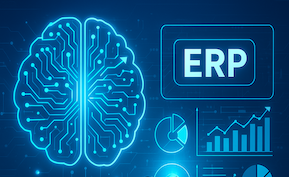Artificial Intelligence
Cross-Modality Generative Agents: Uniting Text, Image, and Data for Smarter Enterprise AI

Cross-modality generative agents represent a major evolution in enterprise AI—systems that understand and generate across multiple data types simultaneously: text, images, video, audio, and structured data. These agents can see, read, and act in context, making automation more intelligent, accurate, and human-like.
What are cross-modality agents?
Traditional generative models specialize in one medium—LLMs for text, diffusion models for images, transformers for audio. Cross-modality agents bridge these silos, combining sensory inputs and outputs into a unified reasoning system. They don’t just describe an image—they interpret it, relate it to data, and decide what to do next.
Why enterprises care
- End-to-end understanding: Analyze reports, dashboards, and images together for comprehensive insights.
- Smarter automation: Agents that handle visual and textual data can execute complex workflows—like reviewing invoices or monitoring equipment health.
- Improved accuracy: Fewer blind spots when decisions combine data from multiple modalities.
- Enhanced human-AI collaboration: Conversations flow naturally across voice, visuals, and structured facts.
Key capabilities
- Visual grounding: Agents interpret charts, screenshots, and diagrams in context with text queries.
- Data comprehension: Connect to SQL, APIs, or CSV data sources and weave numeric results into narrative responses.
- Document parsing: Extract meaning from PDFs, slides, or scanned forms using vision-language models (VLMs).
- Cross-modal reasoning: Link “what’s seen” (e.g., a broken part) to “what’s known” (e.g., maintenance records) and propose actions.
- Generative synthesis: Produce mixed outputs—text reports with visual annotations or graphs built from analysis.
Sample enterprise use cases
- Operations: AI agents detect anomalies in factory camera feeds and generate incident summaries for maintenance teams.
- Finance: Systems read invoices, reconcile them with ERP data, and flag discrepancies with visual evidence.
- Healthcare: Combine medical imaging with patient notes for faster diagnostic assistance.
- Retail: Merge video analytics with transaction data to forecast demand or detect theft.
- Marketing: Auto-generate campaign reports with visuals, metrics, and performance commentary.
Architecture of multimodal agents
- Input fusion layer: Encodes multimodal inputs (text, image, video, tables) into a shared representation.
- Cross-attention reasoning core: Aligns relationships across modalities to maintain contextual awareness.
- Task planner: Maps high-level instructions to actions that may involve multiple data types.
- Generation layer: Outputs text, visuals, or structured data in response to queries.
- Feedback module: Incorporates user corrections and domain-specific constraints.
Performance metrics
- Cross-modal accuracy: Degree to which the agent correctly links visual and textual cues.
- Response latency: Time required to process and synthesize multimodal input.
- Confidence calibration: Quality of uncertainty estimation across modalities.
- User satisfaction: Feedback scores for interpretability and utility of responses.
Advantages for business software ecosystems
- Unified data experience: Break down silos between analytics, visualization, and documentation tools.
- Automation of visual workflows: AI can review, annotate, and approve visual assets or reports autonomously.
- Enhanced decision intelligence: Combine KPI dashboards with real-world images or video feeds for full situational awareness.
- Accessibility and training: Multimodal outputs improve comprehension for non-technical users.
Challenges
- Compute and cost: Multimodal inference requires significant resources; optimize for lightweight deployment.
- Data labeling complexity: Aligning visual and textual datasets for fine-tuning is expensive.
- Security: Protect visual and audio data from unauthorized capture or inference leakage.
- Bias propagation: Combining modalities can amplify preexisting model biases if not monitored.
Implementation roadmap
- Phase 1: Identify cross-modal workflows—e.g., document review, incident analysis.
- Phase 2: Deploy pretrained multimodal foundation models (e.g., Gemini, GPT-4V, Claude 3.5 Sonnet).
- Phase 3: Integrate with enterprise data and feedback channels for context learning.
- Phase 4: Establish governance—logging, redaction, and human validation pipelines.
SEO-friendly FAQs
What are cross-modality generative agents? They’re AI systems that process and generate across multiple media types—text, images, audio, and data—within one reasoning framework.
How are they used in enterprises? To automate visually rich or data-heavy workflows like invoice processing, equipment monitoring, and multimodal reporting.
Which models support multimodal input? Emerging platforms like OpenAI GPT-4V, Anthropic Claude 3, and Google Gemini enable integrated text–vision reasoning.
What challenges exist? Compute cost, data privacy, and the need for domain-specific fine-tuning remain key barriers.
Bottom line
Cross-modality generative agents bring the full sensory context of human understanding to enterprise automation. By merging vision, text, and data comprehension, they unlock richer insights, faster operations, and a new standard of context-aware decision intelligence.






